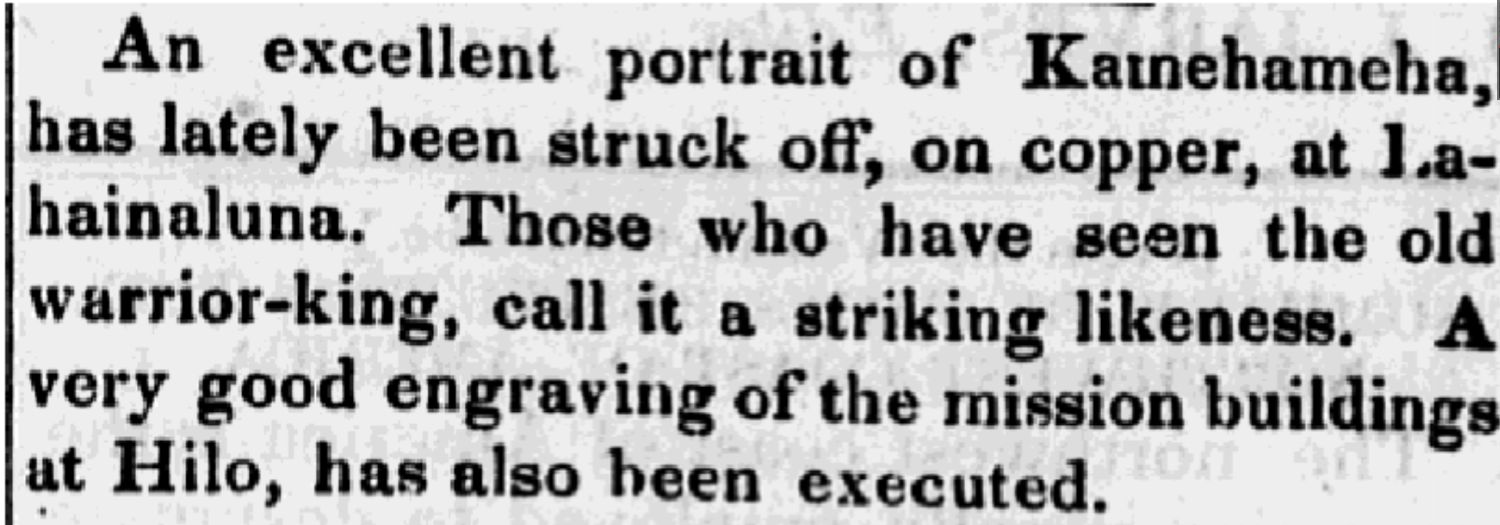Kamehameha I was the Native Hawaiian ali'i nui (leader) who united the Hawaiian islands by 1810 using military conquest and kapu (traditional code of conduct, related to English word taboo). The fact that Kamehameha had united the islands and then died in 1819, paved the way for the Protestant missionaries were sailing from Boston. It was Kamehameha's son, Liholiho, who was the Hawaiian sovereign the U.S. missionaries first encountered. Kamehameha II never converted to Christianity, but his mother Keōpūolani did and was an early supporter of the Christian faith on the islands.
This bust length portrait of Kamehameha produced at Lahainaluna Seminary was engraved by Lutera Kepohoni, a local resident of Lahaina, not a student at the school. It was based on a painting known as the "red vest" portrait in which Kamehameha is depicted as an older man, wearing a white shirt with a red vest, as painted by the artist Louis Choris (1795-1828). The engraving was advertised as "lately been struck off" in the November 21, 1840, issue of The Polynesian. Though produced a couple decades after Kamehameha's death, his face was still in living memory so the notice continues: "Those who have seen the old warrior-king, call it a striking likeness."

